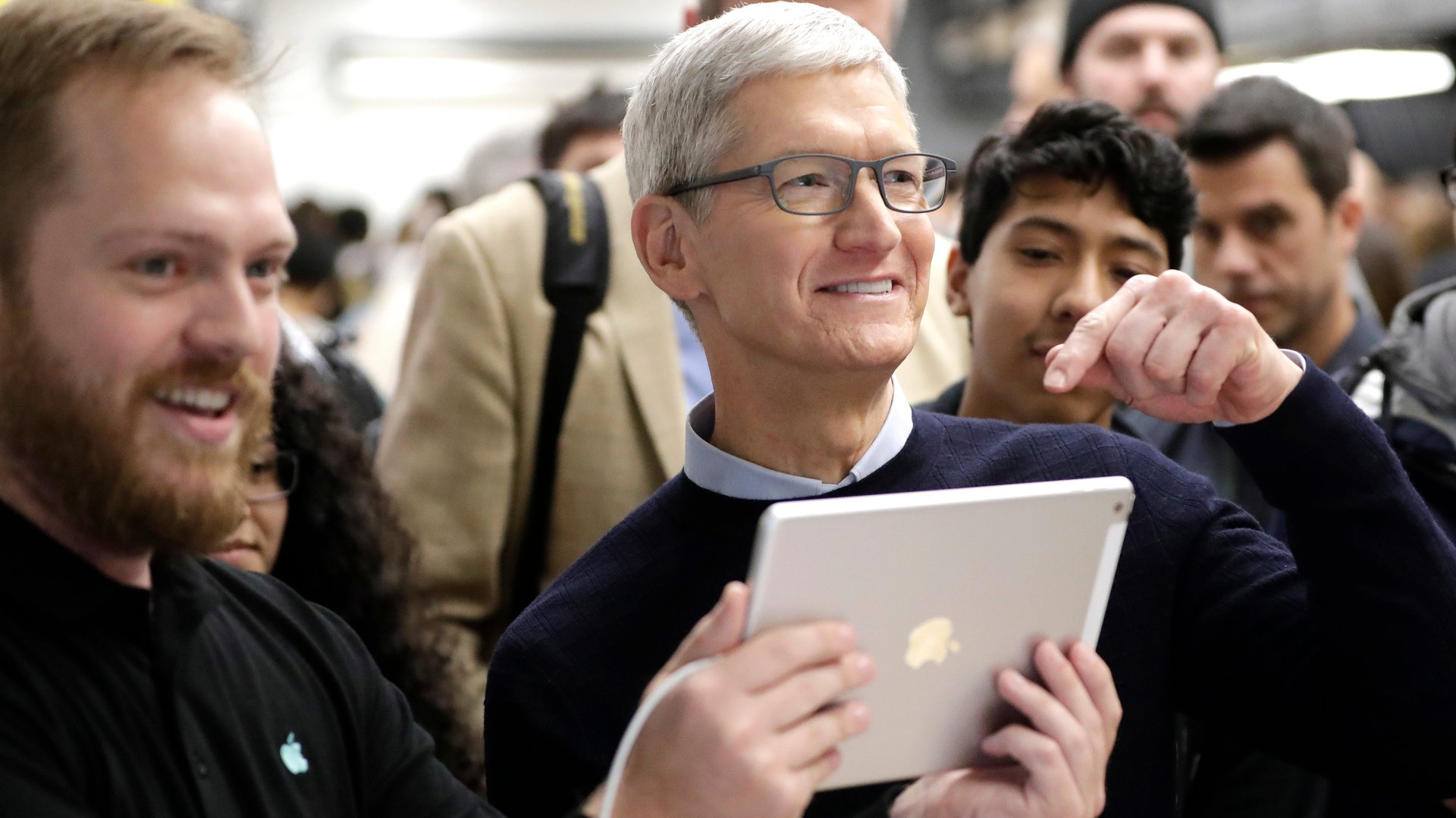Apple doesn’t care if you don’t want the iPhone X
Was anyone really worried about Apple?


Was anyone really worried about Apple?
The company announced its fiscal second-quarter earnings today (May 1), reporting a revenue of $61.1 billion. That just beats expectations, and represents a jump of roughly 15% from a year earlier. It was Apple’s best-ever second quarter for sales.
There had been fears Apple may have had a middling quarter, as rumors and reports swirled suggesting demand for its $1,000 iPhone X, released in Oct. 2017, had started to cool. Prior to the earnings announcement, analysts estimated Apple had generated about $61 billion in revenue, splitting the difference between the $60-$62 billion the company forecasted for the quarter.
Apple’s stock price was up over 4% at one point during after-hours trading, but eased back to a gain of about 3.4% by the time of publishing, as the strong earnings report was tempered by a conservative forecast for the third quarter. The company said it expects to generate between $51.5 billion and $53.5 billion in the third quarter, in line with market’s projection of $52 billion.
The company announced a $100 billion share-repurchasing program, which surely pleased investors, and a 16% increase of its quarterly dividend, as a result of the massive lump of cash freed up thanks to a tax cut on overseas earnings passed by the US government in 2017.
The vast majority of Apple’s current revenue comes from iPhone sales. This past quarter, it sold over 52 million iPhones, generating $38.03 billion in revenue. That accounted for 62.2% of the company’s total revenue for the quarter, down slightly from the 62.8% iPhone sales represented the same period a year ago.
On a call to discuss the earnings report, Apple CEO Tim Cook said that the iPhone X was the best selling model each week in both the recent quarter and the one before it, dispelling some of the rumors that the X’s popularity had started to wane. “The iPhone X is a beloved product,” he added.
But numbers don’t lie and the X doesn’t appear to be as dominant as Cook suggests. In Apple’s first fiscal quarter, when the iPhone X initially went on sale, the average price of an iPhone jumped to nearly $800. That number fell in the second quarter, to $728. That suggests that while the iPhone X may have been the single-most popular iPhone model sold during the most recently completed quarter, more people were still buying other, cheaper Apple phones.
The biggest success story for Apple over the last few quarters has been its Services business. This includes all the digital products it offers, from Apple Music subscriptions, to apps, games, and movies. The Services business has grown for five quarters in a row, a success that has essentially bucked what has been a seasonal sales trend for Apple. Services generated $9.2 billion in the most recently completed quarter, the most ever for this business segment in a single quarter and 31% more than a year earlier. The segment’s revenue over the last year would make it the size of a Fortune 100 company on its own.
As iPhone sales ebb and flow, sales of Services, as well as accessories to augment the iPhone experience, can help steady Apple’s earnings. But those likely won’t be enough to keep Apple at the heights at which it’s spent last decade—the company will need another hit on the scale of the iPhone to do that.
Apple has been pushing its iPad as a computer replacement to a larger audience of late. However, many people still seem interested in its traditional computers, and, on a per-unit level, those continue to generate more revenue for the company than iPads. The company sold about 9 million iPads and 4 million Macs in the quarter, and generated$4.1 billion for the iPad sales compared to $5.8 billion in Mac sales.
Another bright spot for Apple has been its “Other Products” business line, which includes the Apple Watch, AirPods earbuds, Beats, and other accessories. Apple has refused to say exactly how many Watches it’s sold since the product was launched in early 2015. What we do know, however, is that after a spike in revenue that year, growth in the business line tapered off, presumably as interest in the Watch waned. Then, as Apple made its AirPods more available and released the revamped Apple Watch Series 3, sales started to grow once more.
Cook said the Watch is the most popular wearable in the world, adding that AirPods were a “runaway hit.” Overall, Other Products generated $3.9 billion in the second quarter, up about 45% from a year earler.
In past quarters, Apple has struggled to crack growth markets like India and China, and it seems this quarter was not much different. That said, China is getting closer to passing Europe as Apple’s second-largest market behind the US. China generated $13 billion in revenue in the last quarter, trailing Europe by just about $800 million. Cook explained that in China, “the market there is more than iPhone”—Mac computers and the Apple Watch are now getting some traction in the region. The rest of Asia (including India), however, is still in a distant last place.